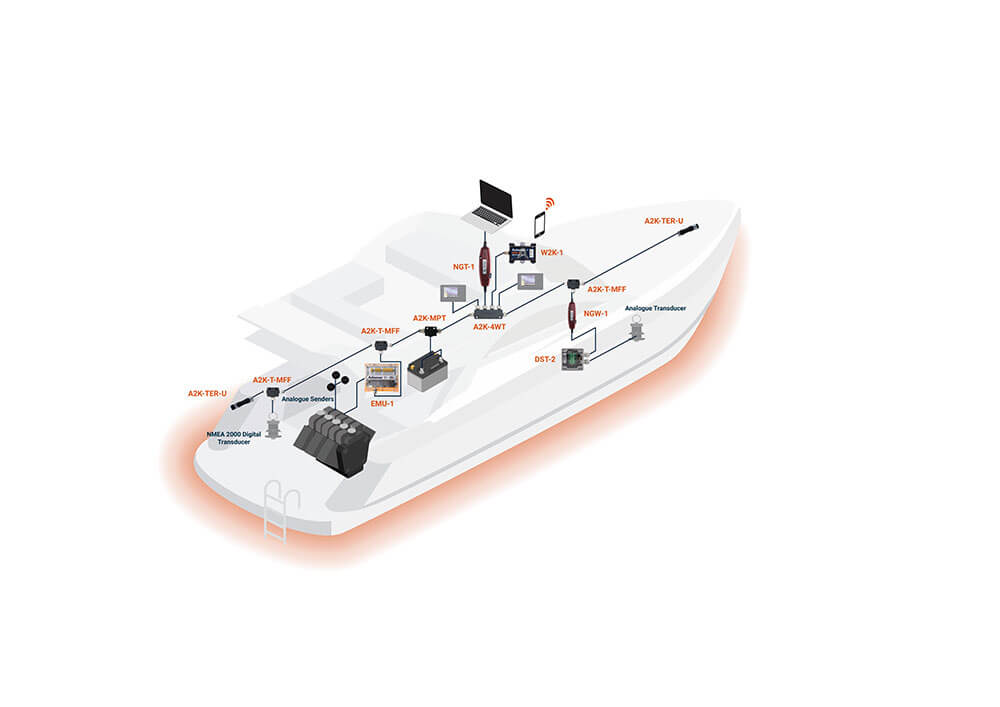

The NMEA chose the DeviceNet standard for its NMEA 2000 cables and connectors.


The backbone can provide power to all low-powered devices (requiring less than 1 Amp) whilst sharing data among all of the devices on the network. Marine electronic devices from various manufacturers that are all NMEA 2000 certified can be safely connected to one central cable running through all relevant areas, known as a backbone. Over the past 10 years, it has become the primary standard used on leisure marine vessels. The NMEA OneNet® working group is developing a new standard (now in beta test phase) designed to work hand-in-hand with NMEA 2000 and allow its data to be shared safely over Ethernet. It was originally released in 1983 and is still being actively updated on a regular basis more than 30 years later. NMEA 2000 was the second international standard released by the NMEA in 2001. The first international interfacing standard released by the NMEA that is still in use and recognised today is NMEA 0183. Its aim is to strengthen relationships between manufacturers in the marine industry and make it easier for marine electronics devices to share data with one another. The NMEA (National Marine Electronics Association) is a ‘not for profit’ organisation based in the USA.


 0 kommentar(er)
0 kommentar(er)
